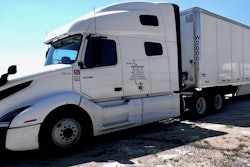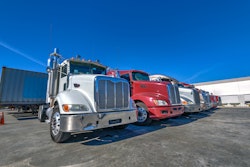Boutique freight is not a term I see frequently, especially during a period of dueling freight over-capacity and freight under-demand. The last instance I found of boutique freight via a search engine was in August 2023. The term boutique means, essentially, personalized — i.e., customized to you, for you. It’s all about you. Doing what is necessary to make your freight experience successful.
Hot shotting freight might be viewed as a boutique freight model. Getting your freight safely and reliably to any destination you want in the fastest road time. FedEx, UPS, Purolator, DHL might conceivably be viewed as boutique providers for premium overnight services.
I stayed in a self-described boutique hotel in Seattle a few years ago for a family wedding. Aside from the conflicting retro-avant-garde remodeled 1920’s building, the hotel had an elevator, front desk, bathroom, bed, and remarkably, nothing else distinguishing itself from any other hotel I’ve stayed in over the decades.
There was one boutique hotel, in North Carolina when I was presenting at an NC State Institute for Transportation Research and Education event, that incorporated an art museum into one of its floors. Now that was unique. But I’ve also seen this at a major hotel in Dallas and in Washington DC, so an art museum does not necessarily qualify a hotel as boutique.
At the heart of freight boutique-ness is customer satisfaction, which seems like the foundation of just about any freight business relationship, and something that every freight company – whether truck, train, ship or airplane – should have as a focus. Alas, that is not always the case.
Companies should all have freight key performance indicators (KPIs) that include customer satisfaction, delivery speed, on-time performance, and customer perceived value.
Nearly everything I do now, from doctor appointments to eating at a restaurant seems to include some near-mandatory customer feedback on my satisfaction level. Doctors, insurance companies, my vehicle dealership, etc. send me emails requesting that I voice my opinion of them based on my most recent transaction. Nearly every food outing seems to require me to decide whether or not to tip, and how much. That is a direct measurement of my customer satisfaction. Many want me to post my satisfaction on social media.
Some freight mechanisms don’t seem to care about on-time, or customer perceived value, or speed, or cost. Some exist as near monopolies in particular lanes. You get what they give you. It’s like that last gas station before a 200 mile drive through the barren Texas range between El Paso and San Antonio, or that trip north out of Las Vegas on Highway 93 toward Twin Falls, Idaho. You’re just happy to get gas and can live with whatever the service and price are.
The tables turn pretty quickly in trucking. The market can go from over-capacity to under-capacity in what seems like a heartbeat. Then every freight mode and company are competing with all the tools in the tool box. Reliable, predictable, cost-effective service becomes a minimum requirement to win and keep customers.
Inside these companies, the same service focus between individuals, groups and employees and management is needed as they are all internal customers. Their satisfaction becomes critical for attracting and keeping staff, drivers, maintenance people, ship’s crews, back-office experts, pilots, ground crew, etc. But that’s a topic for another blog.
The point is that freight market conditions can empower or disarm customers, depending on how hungry freight companies are for business.
Shouldn’t customer satisfaction be close to number one on the priority list all the time?
Companies that always put their customer relationships first likely create that magical thing called brand loyalty. They get positive (and free) advertising through word-of-mouth (or word-of-text) communication. Some companies have such strong customer brand loyalty that customers just ignore anything negative. Look to Apple and Tesla owners for great examples of brand loyalty. Irrespective of market conditions, their customers seem largely satisfied with the products and services — a rare thing.
The brand is almost more important than specific products. Brand image or brand value likely is frequently discussed in the boardrooms of these companies. Sometimes the marketing takes precedence over the products. Sometimes companies ride on their reputations and fail to invest in maintaining brand image. The Bruce Springsteen song, Glory Days, comes to mind.
Establishing and maintaining brand equity is a daily effort. It should be engrained at all levels of a company. I talked with a trailer manufacturer a few years ago about buying a lightweight aluminum trailer for the weight critical aerodynamic SuperTruck test program. I had some sticker shock at the premium that came with aluminum. He explained that most of the companies buying the aluminum trailers were very conscious of brand image, kept their units sparkling clean, and like aluminum, including aluminum trailer wheels, for the message it sent customers. Those customers developed brand loyalty, and likely were happily paying a premium for it.
NACFE meets with many fleets regularly on efficiency technologies. While we have a fascination with measuring efficiency in miles per gallon, the truth is, due to mechanisms like fuel surcharges, customers don’t really get cost benefits from improved fuel economy. Fleets, however, see added profits in the competitive freight marketplace from mpg gains. Theoretically, they could pass on to customers the cost reductions of operating their truck more efficiently than their competitor. However, the market sets the price of shipping and fuel prices are just passed on to customers. What choice do the customers have if both companies charge the same?
Freight Darwinism means these less economical players eventually drop out of the pool of competitors because they just are not making as much profit. Some may even be operating in the red just to keep trucks moving, accepting a loss today and hoping a market shift tomorrow brings back better premiums. A long enough downturn and the cash runs out.
Somewhere in all that competition I feel that customer satisfaction has been taking a back seat to just staying in the freight game. Quality metrics, like on-time performance, customer value, etc., have lessened as freight companies just struggle to survive. A chief engineer at Lockheed once taught me that sometimes you forget the reason you got in the swamp full of alligators was because you wanted to drain it. Just staying alive in freight can be overwhelming.
Freight customer satisfaction metrics should matter all the time. Brand loyalty is hard to earn and easy to lose. It starts with sincerely caring about your customer and their needs. That is much more than price. A lot of customer satisfaction is in hard to measure attributes.
For example, your customer has to attract and retain employees. Those employees care about their home and work environment. Your customer has established clear objectives to reduce the negative impact of their company on the environment and society. What message does your freight company send showing up at your customers dock in a long and tall 7 MPG, non-aerodynamic semi? While your competitor shows up in a 10-plus mpg, aerodynamic one? Both freight companies may charge the same for the load, both may have the same fuel surcharges, but which one will the company prefer to do business with? Which one will make your customer’s employees feel better about the company they work for? That’s hard to measure, but real.
Caring about freight customer needs can be just good business sense, or it can be codified in regulations. Regulations such as California’s Warehouse Investments to Reduce Emissions (WAIRE) rule is emphasizing that fleets impact warehouse operators. The rules introducing one environmental way to measure that impact. Measurement is usually the starting point of improvement.
The rule reflects public and customer desires for a cleaner environment. Other regions do not have that leveling regulatory foundation. But customers, employees, and the customers’ customers still have a voice in a free market environment. If they want cleaner air, less respiratory issues, lower medical costs, etc., what messages are your trucks sending when they arrive at the facility?
All freight carriers need to be boutique-minded. Brand image is important. Customer service quality is important. Some critical KPIs are not measurable in dollars, but the impact of losing sight of the customer experience can be seen on the bottom line of the company’s books.













